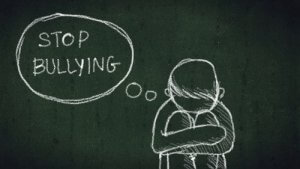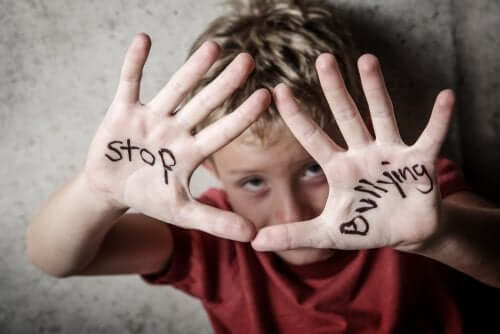3 Activities to Help Prevent Bullying


Written and verified by the psychologist Ana Couñago
Students spend the greater part of their school day inside their regular classrooms. Therefore, working in the prevention of bullying in this context is fundamental. For this reason, we’ve put together the following article in which we explain 3 group activities to help prevent bullying.
Working hard to take on the issue of bullying at school is a very relevant step towards achieving school inclusion. In other words, the absence of bullying makes it more possible for all types of students to develop their social and learning abilities successfully.
The importance of classroom activities to help prevent bullying
To solve the bullying problem, schools play a fundamental role both in intervention as well as in prevention. Therefore, it’s important that schools carry out activities that fulfill the purpose of reducing or eliminating incidences of bullying at school. After all, prevention is the first step in eradicating this social and academic problem.
Below, we’ll offer a detailed description of three group activities to help prevent bullying.
3 activities to help prevent bullying
Come to a consensus regarding rules of coexistence
At school, it’s essential to respect basic rules of coexistence. However, quite often, students themselves are unaware of these rules.
So, the purpose of this group activity is to help students understand, accept, and support the rules of coexistence. What’s more, this activity gives them the opportunity to actively participate in their creation and application. Therefore, the objectives of this activity are:
- Encouraging group cohesion.
- Encouraging a good climate for academic coexistence.
- Reflecting on behavior at school.
- Establishing a group and individual commitment to following the rules.

So, in order to put this activity for the prevention of bullying into practice, teachers need to follow the following steps:
- Ask the children to brainstorm and to come up with rules they should apply in the classroom throughout the year. Have them share their ideas out loud with the rest of the class.
- Take note of their suggestions on the board.
- Pass out a clean sheet of paper to each student. Then, invite students to write down the rules of coexistence that they think are best.
- Take count of votes and select the 10 most popular rules of coexistence.
- Write these rules on a large piece of poster board and hang it somewhere in the classroom where students can see it.
An exercise to get to know similarities and differences
On occasion, small groups of friends form within the classroom. When this happens, a strong bond develops between them, but they don’t get to know their other classmates very well.
With that in mind, the purpose of this activity is for all classmates to get to know each other, thus maximizing cohesion and group identity. In this sense, we can say that the objectives of the activity are as follows:
- Getting to know classmates better.
- Encouraging teamwork and group cohesion.
- Becoming aware of the importance of their own feelings and emotions, as well as those of others.
- Raising awareness about diversity.
To carry out the activity, teachers should adopt the following tasks:
- Pass out a sheet of paper to every student, then have them respond to a set of questions about their personal interests and preferences.
- Divide the class into small groups so they can find answers they have in common, without disqualifying any of their classmates.
- Give each group a poster board. In one column, have them write down the interests and preferences they have in common. In the other column, have them write down their differences.
- Read the answers on the resulting poster boards without saying which group they belong to. This way, the students have to try to guess which answers belong to which group.
Presentation and detection of the concept of bullying
Today, it’s common for students to hear the word “bullying” from the media, from adults, and from their classmates. And while they know that bullying exists in a broad sense, they don’t necessarily have a clear concept of what it really is.

This activity helps students to get to know and really understand what bullying is. After all, in order to prevent bullying, we need to first define it. So, the objectives of this anti-bullying group activity are the following:
- Providing information about the concept of bullying to students.
- Encouraging students to identify situations of bullying at school.
- Maximize cooperative work.
- Ask students to split up into small groups and come up with their own definition of bullying.
- Present their definitions out load and write them on the board.
- Create a common definition based on the entire class’s ideas.
- If students have failed to mention any relevant details about the concept, complete the classroom definition.
- Write the agreed definition of bullying on a poster board and hang it along with the class rules for coexistence.
- Pass out 3×5 cards to the students that describe different situations. Have the students indicate whether the situations on their cards fall into the category of bullying or not. This will allow teachers to verify if the students have understood the concept and are able to detect bullying situations.
Students spend the greater part of their school day inside their regular classrooms. Therefore, working in the prevention of bullying in this context is fundamental. For this reason, we’ve put together the following article in which we explain 3 group activities to help prevent bullying.
Working hard to take on the issue of bullying at school is a very relevant step towards achieving school inclusion. In other words, the absence of bullying makes it more possible for all types of students to develop their social and learning abilities successfully.
The importance of classroom activities to help prevent bullying
To solve the bullying problem, schools play a fundamental role both in intervention as well as in prevention. Therefore, it’s important that schools carry out activities that fulfill the purpose of reducing or eliminating incidences of bullying at school. After all, prevention is the first step in eradicating this social and academic problem.
Below, we’ll offer a detailed description of three group activities to help prevent bullying.
3 activities to help prevent bullying
Come to a consensus regarding rules of coexistence
At school, it’s essential to respect basic rules of coexistence. However, quite often, students themselves are unaware of these rules.
So, the purpose of this group activity is to help students understand, accept, and support the rules of coexistence. What’s more, this activity gives them the opportunity to actively participate in their creation and application. Therefore, the objectives of this activity are:
- Encouraging group cohesion.
- Encouraging a good climate for academic coexistence.
- Reflecting on behavior at school.
- Establishing a group and individual commitment to following the rules.

So, in order to put this activity for the prevention of bullying into practice, teachers need to follow the following steps:
- Ask the children to brainstorm and to come up with rules they should apply in the classroom throughout the year. Have them share their ideas out loud with the rest of the class.
- Take note of their suggestions on the board.
- Pass out a clean sheet of paper to each student. Then, invite students to write down the rules of coexistence that they think are best.
- Take count of votes and select the 10 most popular rules of coexistence.
- Write these rules on a large piece of poster board and hang it somewhere in the classroom where students can see it.
An exercise to get to know similarities and differences
On occasion, small groups of friends form within the classroom. When this happens, a strong bond develops between them, but they don’t get to know their other classmates very well.
With that in mind, the purpose of this activity is for all classmates to get to know each other, thus maximizing cohesion and group identity. In this sense, we can say that the objectives of the activity are as follows:
- Getting to know classmates better.
- Encouraging teamwork and group cohesion.
- Becoming aware of the importance of their own feelings and emotions, as well as those of others.
- Raising awareness about diversity.
To carry out the activity, teachers should adopt the following tasks:
- Pass out a sheet of paper to every student, then have them respond to a set of questions about their personal interests and preferences.
- Divide the class into small groups so they can find answers they have in common, without disqualifying any of their classmates.
- Give each group a poster board. In one column, have them write down the interests and preferences they have in common. In the other column, have them write down their differences.
- Read the answers on the resulting poster boards without saying which group they belong to. This way, the students have to try to guess which answers belong to which group.
Presentation and detection of the concept of bullying
Today, it’s common for students to hear the word “bullying” from the media, from adults, and from their classmates. And while they know that bullying exists in a broad sense, they don’t necessarily have a clear concept of what it really is.

This activity helps students to get to know and really understand what bullying is. After all, in order to prevent bullying, we need to first define it. So, the objectives of this anti-bullying group activity are the following:
- Providing information about the concept of bullying to students.
- Encouraging students to identify situations of bullying at school.
- Maximize cooperative work.
- Ask students to split up into small groups and come up with their own definition of bullying.
- Present their definitions out load and write them on the board.
- Create a common definition based on the entire class’s ideas.
- If students have failed to mention any relevant details about the concept, complete the classroom definition.
- Write the agreed definition of bullying on a poster board and hang it along with the class rules for coexistence.
- Pass out 3×5 cards to the students that describe different situations. Have the students indicate whether the situations on their cards fall into the category of bullying or not. This will allow teachers to verify if the students have understood the concept and are able to detect bullying situations.
All cited sources were thoroughly reviewed by our team to ensure their quality, reliability, currency, and validity. The bibliography of this article was considered reliable and of academic or scientific accuracy.
- Campelo, A., & Lerner, M. (2014). Acoso entre pares: orientación para actuar desde la escuela. Ministerio de Educación de la Nación. https://studylib.es/doc/3112168/campelo–a.-y-lerner-m.-2014.-acoso-entre-pares.-orientac…
- Díaz, M. (2017) Prevención del Bullying en la etapa de Educación Primaria. 34, 186. https://core.ac.uk/download/pdf/235856306.pdf
- Hamodi, C., & Jiménez, L. (2018). Modelos de prevención del bullying: ¿qué se puede hacer en educación infantil? IE Revista de investigación educativa de la REDIECH, 9(16), 29-50. https://www.redalyc.org/articulo.oa?id=521654339002
- Rodríguez, T. L., Cruz, M. D. L. O. T., Vélez, S. C., & Carreño, Á. B. (2023). Factores psicológicos y secuelas en estudiantes de educación primaria víctimas de acoso escolar. REOP-Revista Española de Orientación y Psicopedagogía, 34(1), 141-158. https://revistas.uned.es/index.php/reop/article/view/37422
- UNESCO. (27 de octubre de 2022). El rol de las y los docentes para prevenir y abordar la violencia escolar. https://www.unesco.org/es/articles/el-rol-de-las-y-los-docentes-para-prevenir-y-abordar-la-violencia-escolar
This text is provided for informational purposes only and does not replace consultation with a professional. If in doubt, consult your specialist.








